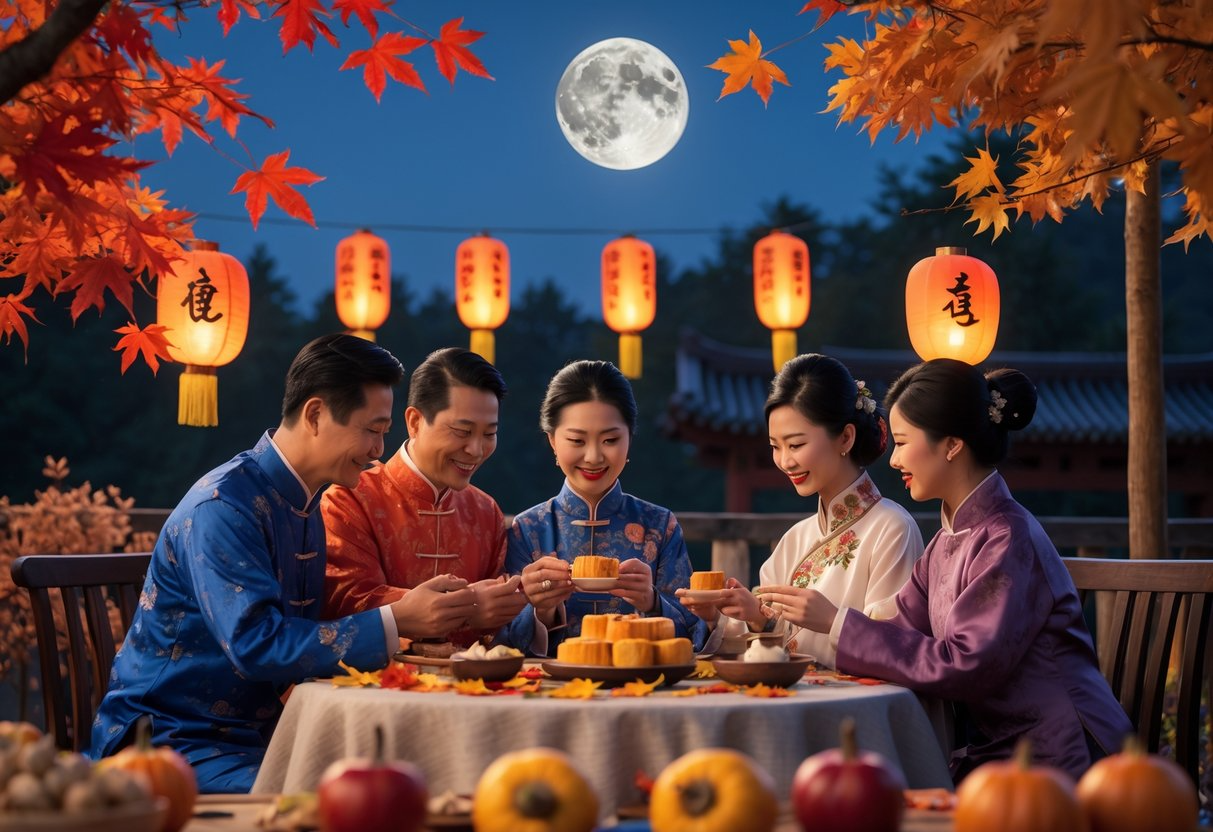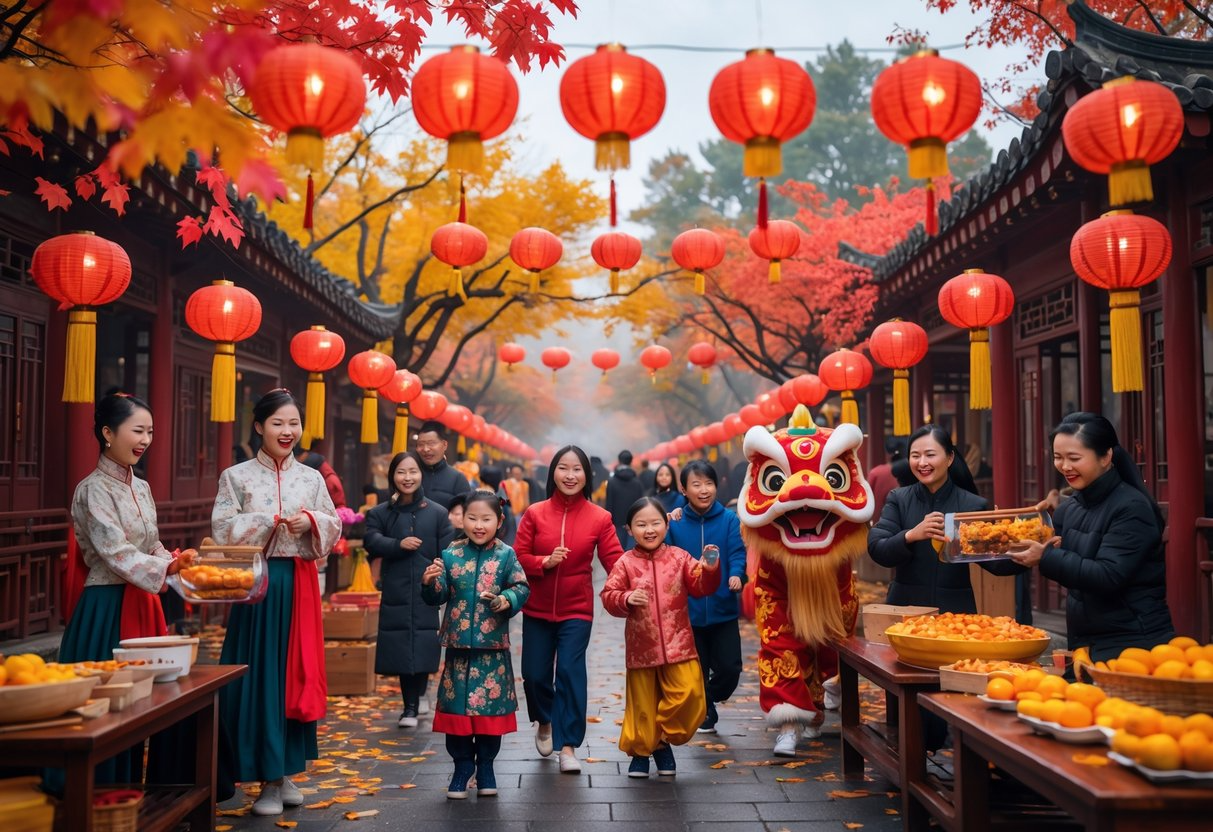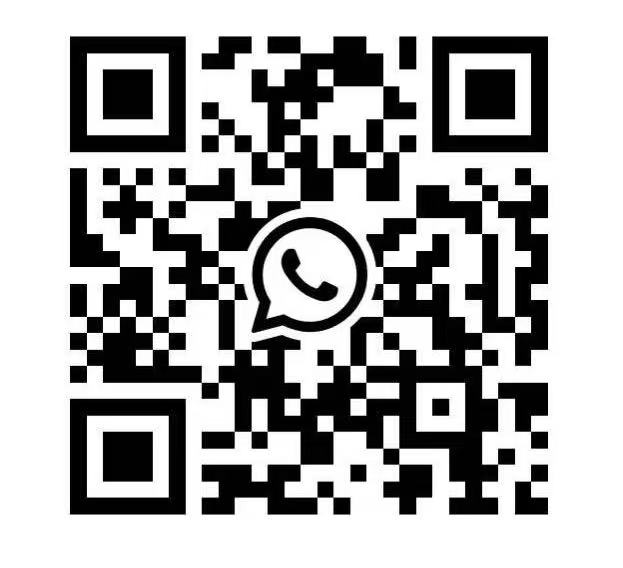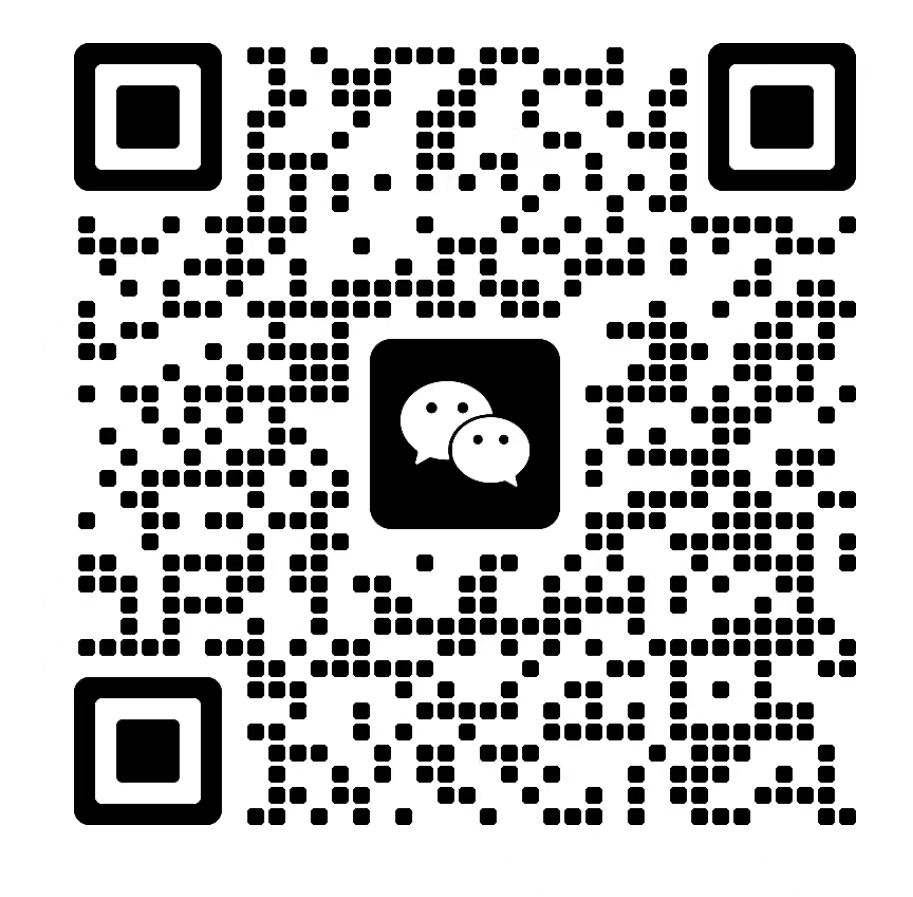The Mid-Autumn Festival is a traditional harvest celebration in Chinese culture. It takes place on the 15th day of the 8th month of the Chinese lunisolar calendar, when the moon is at its fullest. On the Gregorian calendar, this usually falls between mid-September and early October.
The festival is more than just food and lights—it’s about togetherness, gratitude, and honoring the harvest. From ancient moon worship to today’s joyful reunions, it’s a holiday full of meaning.
Key Takeaways
- The Autumn Festival centers on family reunion and the full moon.
- Traditions include mooncakes, lanterns, and stories passed down for generations.
- Modern celebrations vary by region but keep the festival’s cultural roots strong.
Origins and Significance of the Autumn Festival in China

The Autumn Festival, or Mid-Autumn Festival, has roots that go way back. It started with ancient moon worship and grew into a holiday about the full moon, the harvest, and family reunion.
Historical Development and the Tang Dynasty
You can trace the festival’s history back over 3,000 years to the early dynasties. The Zhou Dynasty had emperors who held moon rituals as part of their seasonal worship.
Those early practices became the base for today’s Mid-Autumn Festival. Then, during the Tang Dynasty, the festival took on more cultural importance.
The Tang court encouraged gatherings, poetry, and music under the full moon. This helped the festival spread to more people.
By the Song Dynasty, the festival was hugely popular. Eating mooncakes and evening banquets became the norm. The festival became one of the biggest events on the lunar calendar.
Moon Worship and Ancient Traditions
Moon worship was at the heart of the oldest customs. People believed the moon affected the harvest and symbolized balance in nature.
Emperors offered sacrifices to the moon in autumn, just as they worshipped the sun in summer. These rituals included food, incense, and prayers for good fortune.
Families gathered outdoors to look at the moon and share food. Singing, dancing, and storytelling became part of the fun.
Over time, state rituals turned into family and community traditions. That made the festival something everyone could join, not just the elite.
Symbolism of the Full Moon and Family Reunion
In Chinese culture, the full moon stands for unity and harmony. Because the festival lands when the moon is brightest, people connect it with reunion and shared luck.
Families eat mooncakes—round pastries that mean wholeness. Sharing mooncakes shows a wish for unity and strong family bonds.
The round mooncake matches the full moon’s shape. It’s a simple but powerful symbol.
The festival also marks the end of the autumn harvest. People celebrate with food and gratitude for abundance. The mix of moon symbolism, harvest, and family makes this festival deeply meaningful.
Want to plan ahead with confidence? Read our guide, China Public Holidays Schedule & Chinese New Year 2025.
Traditional Customs and Celebrations

You celebrate the Mid-Autumn Festival with special foods, time with loved ones, and cultural activities. The main customs focus on food, the moon, light, and family.
Eating Mooncakes and Popular Fillings
You can’t really have the festival without mooncakes. These round pastries stand for unity and completeness.
Families exchange mooncakes as gifts and share them in slices with tea. Traditional fillings are lotus seed paste, sweet bean paste, and five-kernel nut mixes.
Some regions add salted egg yolks, which look like mini moons inside the cake. Modern mooncakes get creative—there’s ice cream, durian, taro, pumpkin, and even water chestnut fillings.
These new flavors appeal to younger folks but keep the classic round shape. Pairing mooncakes with osmanthus wine is popular, too. The floral smell matches the season and the sweetness of the cakes.
Moon Gazing and Admiring the Full Moon
You celebrate on the 15th day of the 8th lunar month, when the full moon is brightest. Moon gazing is one of the oldest traditions.
Families gather outside—on balconies, in parks, or courtyards—to admire the moon. Some people burn incense or offer fruit and mooncakes to honor it.
It’s not just about looking at the sky. It’s a moment to think about family, especially those far away. In Chinese poetry and art, the moon stands for longing and togetherness.
Lantern Displays and Lantern Riddles
Lanterns light up the festival. You’ll see them in all shapes—round, animal-shaped, or huge displays in public areas.
Kids carry small lanterns, and some cities host big lantern shows with thousands of glowing lights. Solving lantern riddles is another fun custom.
People write riddles on slips of paper and attach them to lanterns. You try to guess the answers—sometimes it’s tricky, sometimes it’s just for laughs.
Lanterns aren’t just pretty. Their light means hope and guidance, and the round shape connects back to the full moon.
Family Gathering and Reunion Dinners
The Mid-Autumn Festival is really about family. People travel home for reunion dinners, making it a big deal to be together.
Meals include seasonal foods like taro, pumpkin, and fresh fruit, with mooncakes for dessert. Sharing these dishes shows love and respect.
Even if you can’t be with your family, you might still eat mooncakes or look at the moon to feel close. That’s why folks sometimes call this China’s Thanksgiving. Being together is what matters most.
Time off matters for both work and life. To understand your rights, read our article, Guide To Paid Leave, Holidays, and Rest Days in China.
Legends and Folklore Associated with the Festival

Stories tied to the Mid-Autumn Festival explain why the moon means so much in Chinese culture. These tales are about love, sacrifice, loyalty, and community.
Chang’e and the Moon Goddess
The most famous legend is about Chang’e, the Moon Goddess. Her husband, Hou Yi, got an elixir of immortality after saving the world by shooting down nine suns.
Chang’e drank the elixir to keep it out of the wrong hands. She floated up to the moon and lived there alone, separated from Hou Yi.
During the festival, people honor this story by admiring the moon. Chang’e’s image appears in paintings, lanterns, and decorations. Her story reminds everyone of sacrifice and devotion.
Hou Yi and the Archer
Hou Yi is a legendary archer. When ten suns rose and burned the earth, he shot down nine, leaving just one.
He became a hero, but the immortality elixir led to his and Chang’e’s separation. In some versions, Hou Yi built an altar to the moon to honor his wife.
This act connects to moon worship during the festival. It’s a story about loyalty and remembrance.
Jade Rabbit and Mythical Companions
Another favorite tale is about the Jade Rabbit, who lives on the moon with Chang’e. The rabbit was tested by the gods and offered itself as food to show kindness.
The gods rewarded it by sending it to the moon. There, the rabbit pounds herbs with a mortar and pestle.
The Jade Rabbit stands for selflessness and service. Its image shows up on mooncakes, lanterns, and festival art.
Kids especially love this story. The rabbit’s gentle nature adds warmth to the festival.
Together, Chang’e and the Jade Rabbit make the moon feel like a place of companionship. Their story highlights generosity and caring for others.
Fire Dragon Dance and Unique Regional Customs
Some regions have their own customs that make the festival unique. In Hong Kong, the Fire Dragon Dance is a big draw.
People carry a long dragon made of straw and incense through the streets. It glows with sparks and smoke.
The dance isn’t about Chang’e or Hou Yi, but it’s meant to drive away bad luck and bring health. It also brings the community together.
Other places light lanterns or offer fruit to the moon. These local touches show how the festival mixes national myths with regional traditions.
Modern Celebrations and Regional Variations

Today, you’ll see the Mid-Autumn Festival celebrated in many ways across China. The date follows the lunar calendar, but cities like Hong Kong, Guilin, and Beijing’s Beihai Park have their own special events.
Tourism picks up, too, since the National Day holiday sometimes overlaps with the festival. That shapes how people travel and celebrate.
Festival Dates and the Lunar Calendar
The festival doesn’t fall on the same day every year. It’s always on the 15th day of the eighth lunar month, usually in September or early October.
In 2025, it’s October 6. In 2026, it’ll be September 25.
Since the festival follows the moon’s cycle, it always lands on a night with a big, bright full moon. That’s why moon gazing is so important.
If you plan to travel in China, keep an eye on these dates. Hotels and trains fill up fast, especially when the festival lines up with the National Day Golden Week.
Celebrations in Hong Kong, Guilin, and Beihai Park
In Hong Kong, you can join huge lantern carnivals, dragon dances, and fire dragon parades. Lantern shows light up Victoria Park, and families gather outdoors to watch the moon.
Guilin celebrates along the Li River. Locals release lanterns and enjoy performances by the water. The scenery makes the festival feel extra special.
Beihai Park in Beijing mixes tradition with public events. You’ll find lantern displays, cultural shows, and moon-viewing around the lake.
The park was once a spot for imperial celebrations, so it’s still a favorite place to enjoy the festival.
National Day Holiday and Autumn Festival Tourism
The National Day holiday starts on October 1 and lasts a week. When it lines up with the Mid-Autumn Festival, travel in China gets wild.
Families often take trips, visit relatives, or join local events. Places like Guilin’s karst hills and Beihai Park get packed.
If you want to catch lantern shows or performances, plan ahead. Book trains and hotels early—spots fill up fast.
Bottom Line
The Autumn Festival China treasures is more than a holiday—it’s a living tradition. Families gather, share mooncakes, and honor the full moon, keeping alive customs that span centuries.
Though modern life has changed how it’s celebrated, the heart of the festival remains family, unity, and gratitude. From cities to villages, its glow connects people across generations. Understanding such traditions also helps in navigating today’s cultural and business landscape.
Traveling is easier when you know the rules. For clear insights, check out our piece, Tourism Law in China: Guide for Visitors in 2025.
👉 For deeper guidance, consult China legal experts for clarity and success.
Frequently Asked Questions
What is the historical significance of the Mid-Autumn Festival?
The Mid-Autumn Festival goes back over 3,000 years to ancient harvest parties. People honored the full moon, seeing it as a sign of unity and hope for a good year.
It became a time for families to give thanks and wish for luck.
How is the Mid-Autumn Festival traditionally celebrated in China?
Most folks gather with family, eat together, and watch the full moon. Lanterns light up streets and parks everywhere.
Some towns put on shows, dances, or other fun events.
What are the common foods and delicacies associated with the Mid-Autumn Festival?
Mooncakes steal the show. You’ll find them filled with lotus seed paste, red bean, or salted egg yolk.
People also eat fresh fruit, taro, and other seasonal treats during family dinners.
What is the legend or story behind the Mid-Autumn Festival?
The story of Chang’e, the moon goddess, is famous. Legend says she drank an elixir and now lives on the moon.
During the festival, people gaze at the moon to remember her and think of loved ones far away.
How does the Mid-Autumn Festival influence contemporary Chinese culture?
The festival pops up everywhere—family dinners, city events, and even in business. People swap mooncakes as gifts at home and at work.
It’s a big deal for Chinese communities all over the world, helping keep traditions alive.
What are some unique customs or practices observed during the Mid-Autumn Festival?
In some places, people put on dragon and lion dances or play lantern riddle games. Kids love carrying bright lanterns shaped like animals or flowers.
Some regions serve special local foods and put on performances that make their celebrations stand out. Every area adds its own twist to the festival.
Subscribe to receive updates
Subscribe to receive the latest blog posts to your inbox every week.






